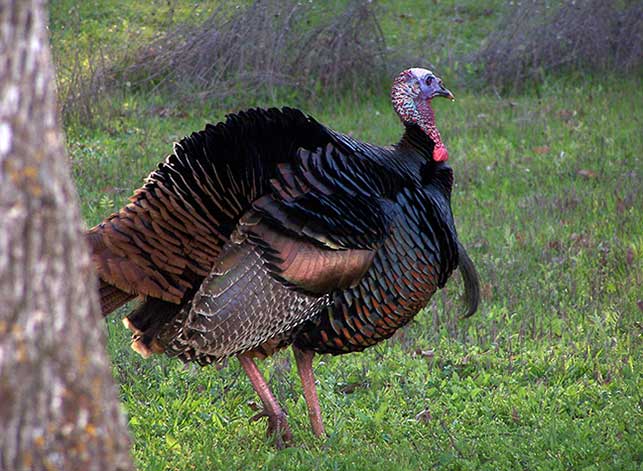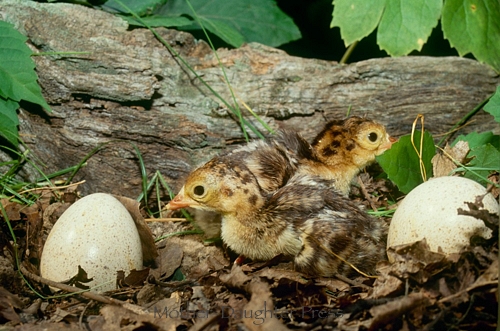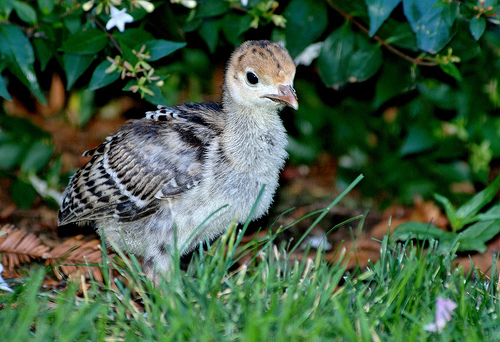
One of our more recent surprises in Borrego Springs was a wild turkey hen roaming the neighborhood brush and walking down the 18th hole of the deAnza Golf Course in front of our house. I've only seen this one wild turkey so far, which I believe locals have named Matilda.
These are not photos of Matilda but I think she'd be happy with the pictures selected.

Wild turkeys (Meleagris gallopavo) live in various parts of North America, including the desert, and are the largest game birds found in this part of the world. They spend their days foraging for food and spend their nights under bushes or in low branches of trees.
Wild turkeys are omnivorous, foraging for nuts, seeds, berries, roots, grasses and insects. Turkeys also occasionally eat small reptiles, like snakes.
Wild turkeys (but not domestic turkeys) can fly for short distances at speeds of up to 55 miles per hour. They can reach speeds of 25 miles per hour on the ground.
Throughout North America, wild turkeys are making a comeback. In an effort to increase the wild turkey population, California has released several subspecies in the state - Rio Grande, Eastern, Merriam’s, and Eastern/Rio Hybrid.
Turkeys have great hearing, but no external ears. They can see in color and have a wide field of vision (about 270 degrees), which makes it hard to sneak up on them.
Wild turkeys are omnivorous, foraging for nuts, seeds, berries, roots, grasses and insects. Turkeys also occasionally eat small reptiles, like snakes.
Wild turkeys (but not domestic turkeys) can fly for short distances at speeds of up to 55 miles per hour. They can reach speeds of 25 miles per hour on the ground.
Throughout North America, wild turkeys are making a comeback. In an effort to increase the wild turkey population, California has released several subspecies in the state - Rio Grande, Eastern, Merriam’s, and Eastern/Rio Hybrid.
Turkeys have great hearing, but no external ears. They can see in color and have a wide field of vision (about 270 degrees), which makes it hard to sneak up on them.

 |
| Poults |
Babies (called poults) flock with their mother all year (even through the winter). The mother roosts on the ground with them for the first two weeks of their lives when they are unable to fly.


Turkey Vocab
Caruncle - brightly colored growths on the throat region. The skin on the throat and head of a turkey can change color from gray to bright shades of red, white, and blue when the bird becomes distressed or excited.
Gizzard - a part of a bird's stomach that contains tiny stones. It helps them grind up food for digestion.
Hen - a female turkey.
Poult - a baby turkey, turkey chick.
Snood - the flap of skin that hangs over the turkey's beak. Turns bright red when the turkey is upset or during courtship.
Tom - a male turkey... also known as a gobbler.
Wattle - the flap of skin under the turkey's chin. (Also turns bright red when the turkey is upset or during courtship.)
